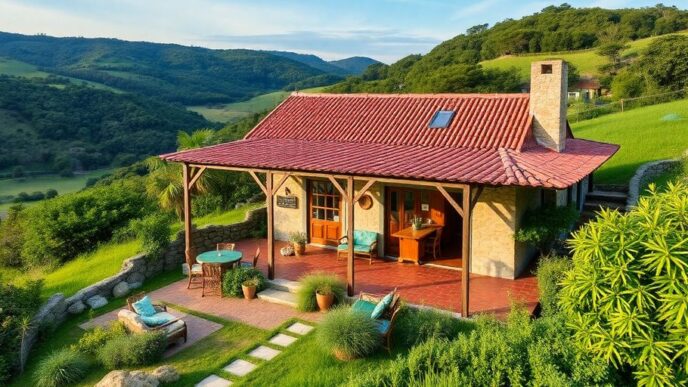Post Company and Lázaro Rosa-Violàn Collaborate on Locke de Santa Joana Hotel
Design studios Post Company and Lázaro Rosa-Violàn have masterfully combined historic features with contemporary touches to create the Locke de Santa Joana hotel in Lisbon, Portugal. The project involved renovating a 17th-century convent and integrating it with newly constructed additions.
Key Takeaways
- Historic and Modern Fusion: The hotel blends the rich history of a 17th-century convent with modern design elements.
- Collaborative Design: American studio Post Company designed the room interiors, while Barcelona-based Lázaro Rosa-Violàn focused on the public spaces.
- Extensive Property: The hotel spans nine floors and includes 370 units, ranging from hotel rooms to apartments and suites.
- Local Materials: Fabrics, ceramics, and stone finishes were sourced from the surrounding area.
- Public Amenities: Features include restaurants, cafes, bars, a co-working space, a gallery, and a courtyard pool.
A Blend of History and Modernity
The Locke de Santa Joana hotel is the latest and largest property from Locke Hotels. Set across nine floors, it contains 370 units, including hotel rooms, apartments, and suites. The design aims to marry the rich history of the original convent with the contemporary culture of Lisbon.
"The hotel was originally a convent built in the 1600s – in designing the rooms, we wanted to marry this rich history with the contemporary culture of Lisbon," said Post Company partner Jou-Yie Chou.
Interior Design by Post Company
Post Company focused on refining and highlighting the architectural features of the rooms, such as archways, pillars, and moldings. The interiors are largely clean and minimal, complemented by modern furniture, lighting fixtures, and decorative elements in natural tones.
- Furniture: Chairs in the kitchens and living spaces have a foundation in pews or church furniture but still read as modern.
- Materials: Mohair and boucle upholstered furniture in sinuous shapes lend geometric friction, while clean, minimal millwork is softened by over-stuffed textiles.
- Local Sourcing: Rugs and textiles from local makers, Portuguese stone Rose Aurora for the washbasins, and local limestone for the bathroom floors.
Each suite-style room features a living area and a burnt orange kitchenette, divided from the bedroom by a glass and wood partition screen. "Glass and wood partitions provide design interest and functionality all at once," said Chou.
Public Spaces by Lázaro Rosa-Violàn
Lázaro Rosa-Violàn continued the natural, rustic color palette of terracotta, yellows, greens, and blues used in the rooms for the shared spaces. Public areas include restaurants, cafes, bars, a co-working and meeting space, and a gallery to display pieces found during the renovation of the convent.
- Ceramics: Large plant-filled terracotta pots and mosaic tiles traditionally associated with Lisbon line the walls and tabletops.
- Color Palette: Warm, contemporary spaces inspired by the color tones of the existing architectural elements.
"When talking about Lisbon, the first thing that comes to mind is the distinctive tiles adorning the city’s buildings," said Rosa-Violàn. "We’ve incorporated this element in a modern and contemporary way, combining them with rich textures, patterns, natural materials, and colorful fabrics, accentuating the historical architecture."
Conclusion
Since its first location opened in 2016, Locke has expanded to include 17 sites across the UK and mainland Europe. The Locke de Santa Joana hotel in Lisbon stands as a testament to the successful blend of historical architecture and modern design, offering guests a unique and luxurious experience.













